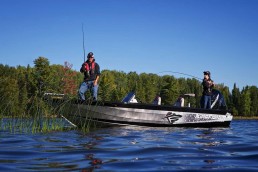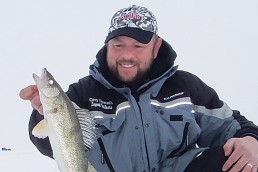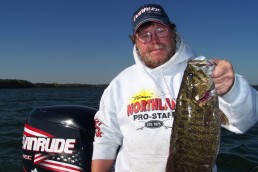Uncovering Fish: Seek ye Structure and Cover
SHARE THIS POST
One of things that fascinates me whenever I talk with, listen to and/or observe other anglers out on the water is the fact that so many of us get caught up in the “lure game.” I’ll be the first to admit it’s an easy trap to fall into. I mean, who doesn’t want to buy the hot new bait or lure when they hear it’s catching so many big fish?
However, there never has been—and never will be—a secret bait or lure that always catches fish. That’s the reason why, when I’m presenting seminars at fishing shows, I emphasize that the single biggest reason we don’t catch fish is the simple fact that there are no fish where we’re dangling our lines. So while you may be driving the finest boat, and using the most expensive rod, reel, line and tackle, the gear is useless if you don’t use it where fish are present.
This brings us to two of the most important concepts in fishing: structure and cover. If you understand what the two terms mean and how they relate to each other, you’ll be on the fast track to fishing success. Nearly every fish you catch will be relating either to structure or cover, and often to both.
Think of structure as being any change or difference in the bottom of the lake. So, an underwater point is a form of structure just as a reef, a shoal, or a saddle between two islands are forms of structure.
Are you enjoying this post?
You can be among the first to get the latest info on where to go, what to use and how to use it!
Cover, on the other hand, is anything that is on the bottom and/or over the water. So, a patch of cabbage growing in a lake is a form of cover, just as the docks and boathouses that line the shoreline are forms of cover. Other examples of cover: A fallen tree, a series of flooded stumps or submerged logs.
Now, why are these things important? As a general rule, all fish relate to structure but not all structure has fish relating to it. There is a difference. So, how can we sort out what structure is best? Often, the best structure has cover associated with it. Take two identical underwater points jutting out from shore, but place cover on one—docks, a clump of cabbage, or a fallen tree. The structure combined with cover will almost always produce more and bigger fish than not.
Ditto, if you find fish relating to a certain type of cover. Let’s say muskies in the summer are relating to cabbage beds. Again, if you take two identical beds of cabbage, but place one on top of a piece of structure, it will almost always produce more and bigger fish than the same patch of cover that’s not associated with the structure.
MWO
SHARE THIS POST
Did you enjoy this post?
You can be among the first to get the latest info on where to go, what to use and how to use it!
Gord Pyzer
Hall of Fame fisherman, fisheries scientist, and legendary fishing writer Gord Pyzer has a Master’s in Resource Management, spent 30-plus years with Ontario Ministry of Natural Resources, and is a pioneer in modern muskie management. Pyzer is Fishing Editor for Outdoor Canada magazine, and now a regular contributor to MidWest Outdoors.



